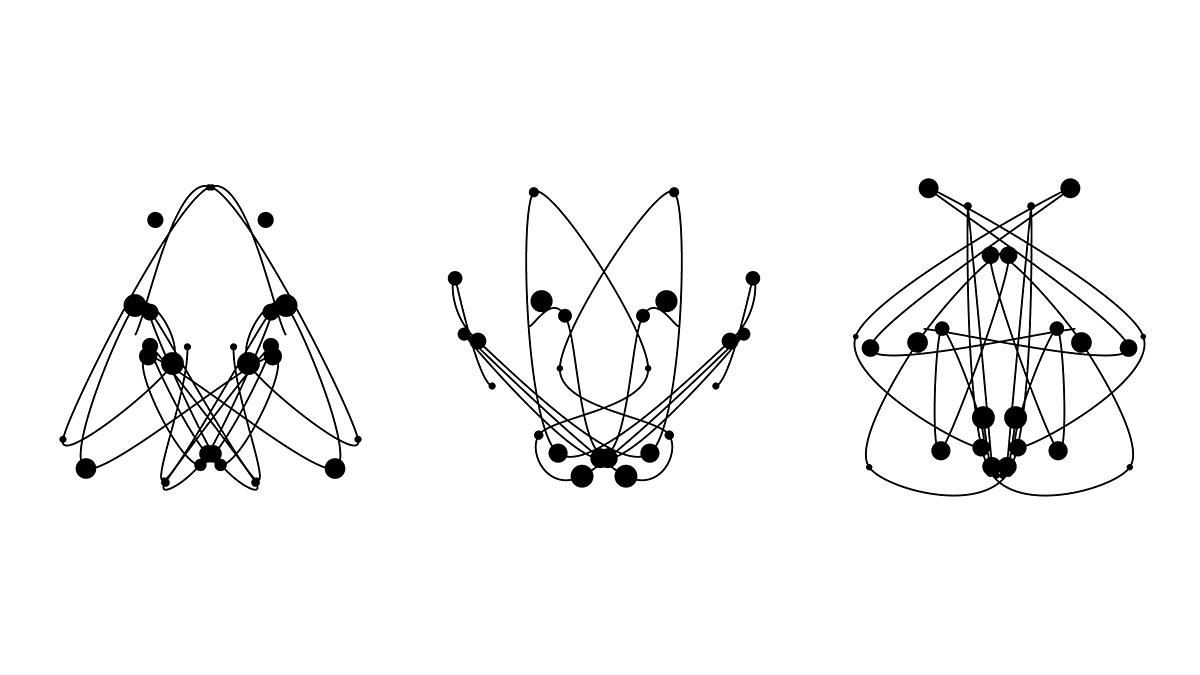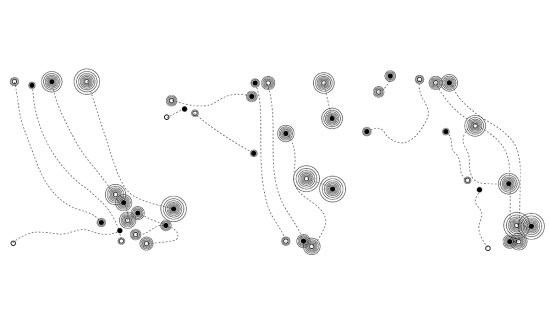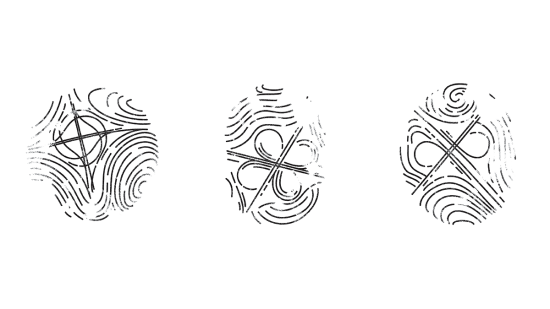Interview with Pedro Silva
Instamorphs
Winner 2023
We are living in an information society. The internet has merged the societal patterns of the world’s different cultures into one community, changing the way we communicate and relate, and the differences between how we communicate in our real world versus our digitized world must be considered. More than ever, we are constantly producing and storing data, which means we are always in the process of forming a virtual universe of digital entities. All of these actions, which create virtual organisms, are instants yet they will live forever, and so will also forever shape our virtual personas. Instamorphs is a visual representation of this metaphor. The symbols represent the names of forty-five pioneer digital designers that left their mark in our digital world through generative design. To represent that our virtual world and its organisms are in constant evolution and mutation, the symbols use Richard Dawkins’s Biomorphs as a visual and conceptual reference.
Studying the wing anatomy of common insects was the foundation of Instamorphs’s creation process. For abstraction and simplicity’s sake, the forty-five symbols were based on the flies, butterflies, and moth’s wings. The authors’ names are responsible for creating the organisms themselves. To build the grid system’s anatomy, a number from one to fourteen was assigned to each of its fourteen sectors. Each letter of the designers’ names were translated into a single point, and their full names originated the path containing those ordered points. To do so, each letter was converted into its corresponding ASCII number, subsequently divided by the modulo (or integer remainder) of fourteen, thus dictating the sector of the grid to which its point belongs. However, the exact position within the sector is given stochastically. All the space contained by the barriers of the sector is admissible for the positioning of the point, giving a dynamic quality to the generation of the organisms, because as in nature, no two organisms are alike. Each of these points (letters) was further emphasized with a circle of variable size to ensure the final result resembled the real appearance of the portrayed insects. The resulting forty-five symbols creates an analogy between Dawkins’s work and Instapmorphs that serves as a metaphor for what it means to create work in our current digital world.
Pedro Silva
Pedro Silva is a cross-media designer and researcher at the Computational Design and Visualization Lab. He holds a BA and MA in Design and Multimedia from the University of Coimbra, Portugal where he is also currently a PhD candidate in information visualization. His design interests include information visualization, computational art, and generative design as well as typography, editorial, and graphic design.
Process




